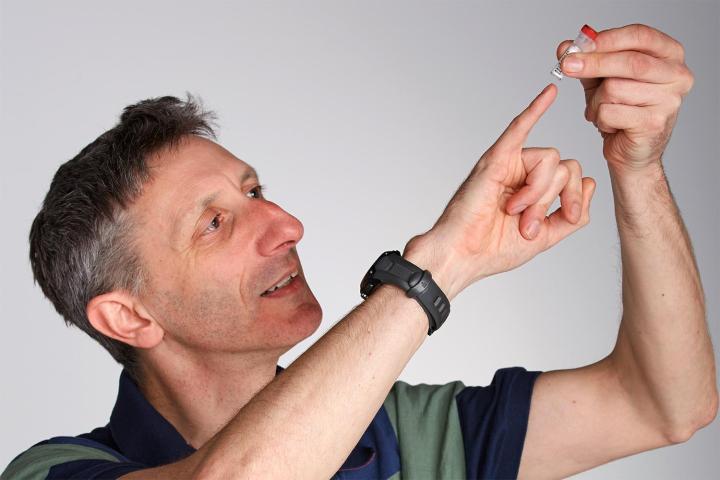
The Voyager engineers have 400 years or so on today’s scientists. DNA storage is probably a little closer to today than the 25th Century, where Star Trek: Voyager was set. Still, this budding technology has a lot of obstacles, among them prohibitive costs. If that can be conquered, though, all of today’s existing digital data could be stored and preserved in about four grams of synthesized DNA.
How synthetic DNA works
What makes DNA attractive for data storage is the density with which it can store data. Data is stored in nucleobases. Each nucleobase can represent at least one bit of data, and each living cell can contain millions of nucleobases. If all this is hard to fathom, look at this way: storing data in DNA will allow a density close to one-million gigabytes (GB), or one petabyte, per cubic millimeter. These absolutely dwarfs the data density of modern magnetic and electronic storage.
Another problem with current storage solutions, even solid state drives and magnetic tape, is that with time their reliability degrades and data is lost. SSDs can lose data if left unpowered for too long (a few months), making them unreliable for long-term storage. Magnetic tape lasts longer, but it can degrade over decades as its chemical makeup breaks down.
DNA, left unprotected, behaves in much the same way. In fact, without some kind of protection, DNA wouldn’t last as long as most hard drives, perhaps only about two or three years. In the biological world, DNA degrades due to a number of factors, among them moisture, heat, and oxygen.
Maintaining data integrity, of course, entails protecting the DNA from the elements. Researchers at ETH Zurich university have addressed this issue by encapsulating the DNA in a “synthetic fossil” made of glass, much like nature protects DNA by encompassing it in fossilized bio-matter. Protecting DNA is more practical, at least in physical terms, than guarding magnetic tape because of DNA’s extreme data density. A single capsule can contain the data found on racks and racks of magnetic tape.
When will we see the first DNA drive?
Storing data in DNA will allow a density close to one-million gigabytes (GB), or one petabyte, per cubic millimeter
As you can imagine, the process of writing digital information onto genetic material isn’t exactly routine. You may have figured out that for now, and in the near future, this isn’t a replacement for the hard drive in your desktop, as it’s a one way street. Once you’ve written the data to the DNA and encased it in glass, that’s it, until you want to access the content.
Anyone seeking to read the data in the synthetic fossils can do it by dissolving the glass in a fluoride solution designed to leave the DNA unharmed. However, once the DNA is no longer fossilized it is once again susceptible to the elements and may degrade quickly.
For example, during the ETH Zurich experiment, where the DNA was stored in a simulated 10,000-year environment at 40 degrees Fahrenheit (4 degrees Celsius), at least one error showed up in about 80 percent of the strands. Around 8 percent of the strands were lost altogether.

Dr. Robert Grass, lead researcher of the ETH Zurich team, and his associates calculated that storing the same data at 0 degrees Fahrenheit would what (the same temperature as the inside of the Svalbard Global Seed Vault located on the Norwegian island, Spitsbergen). The seed vault is an un-staffed warehouse carved in the side of a mountain where thousands of seeds are stored to maintain the Earth’s diversity of crops in case of a disaster.
DNA storage certainly has a way to go before becoming mainstream. In its current state, it’s good only for preserving data for the ages. The biggest obstacle is the cost of experimentation, and the actual writing of data to DNA. Dr. Nick Goldman of EMBL has suggested that perhaps by the mid-2020s costs will have come down enough to make DNA data storage feasible on a large scale.
Obviously, the technology has a long way to go, and this probably won’t be the only convergence of information technology and biology over the next 5 to 10 years. Who knows, by then we may be operating our computers telepathically (and storing data in the unused portions of our brains).
Editors' Recommendations
- There’s a new reason HDDs could be better than SSDs
- DNA, laser-etched glass, and beyond: A peek into the future of data storage


